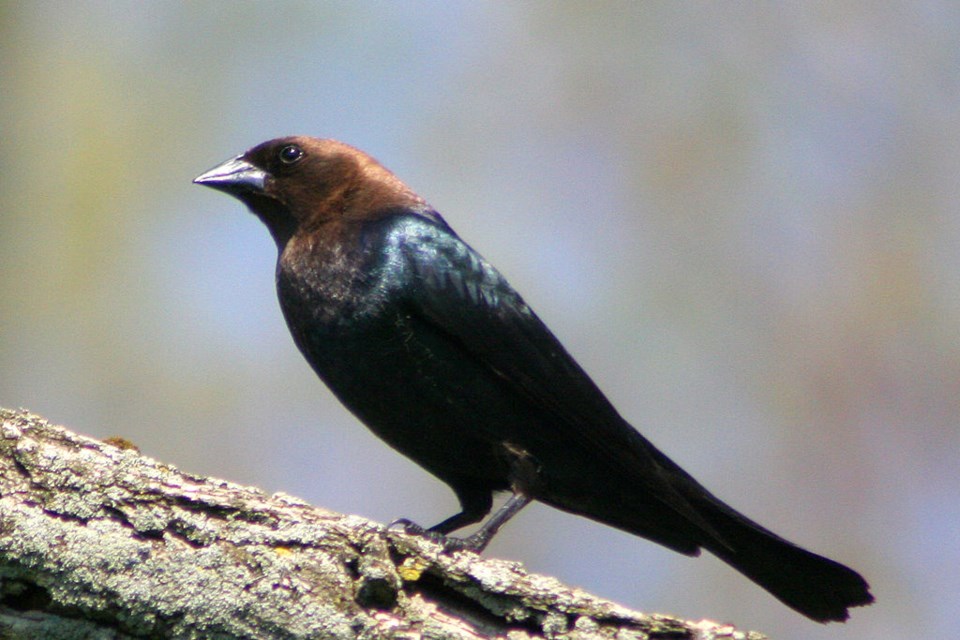The dog days of summer are almost upon us. June was very changeable, a not uncommon occurrence, but now the temperatures are in the high 20s and a mid-summer lethargy is taking over. Birdsong is now almost completely absent, though I did hear a single Swainson’s thrush song a couple of evenings ago. These thrushes will still be around in the woods until September but their vocal output will be restricted to their soft “whit” call note. We will next hear their song in mid-May when they return from wintering in Mexico and south.
One common sight in June and July is family groups of birds with the parents being trailed around by their offspring. The young birds may still be dependent on their parents but they are also learning the tricks of feeding and just plain survival from predators. There have been reports of various warblers: black-throated grey, orange-crowned and yellow-rumped, feeding young cowbirds. Brown-headed cowbirds, common on the Sunshine Coast, are nest parasites that lay their eggs in the nests of host species, which then raise the cowbird young to the detriment of their own offspring. Such behaviour brings on approbation from humans who deplore this free-loading. However, one has to admire the genius of this evolutionary trait that developed on the Prairies where the cowbirds co-evolved with the bison. The bison were always on the move and the cowbirds found they could not both follow the bison herd and stay in one spot long enough to raise a family. Hence they laid their eggs in the nests of hosts and let them do all the child-rearing. Cowbirds will parasitize almost any smaller species. In Europe the cuckoo is also a nest parasite.
Our warm summer evenings are the time to see and hear common nighthawks as they fly together in loose flocks over our lower elevations. These birds cannot be confused with any other species with their zig-zag flight, very obvious white wing bars, and a distinctive “peent” call note. Sometimes you will hear a booming sound made by the birds as they dive. These birds are nightjars, a worldwide family of aerial insectivores. Some very large flocks have been reported on the Sunshine Coast, the largest 250 to 300 birds in 1998, with numerous other reports of over 100. While these birds are still common, the aerial insectivores as a group are generally declining. Other species in this group are the swallows and swifts.
To report your sightings or questions, contact [email protected] or 604-885-5539.



